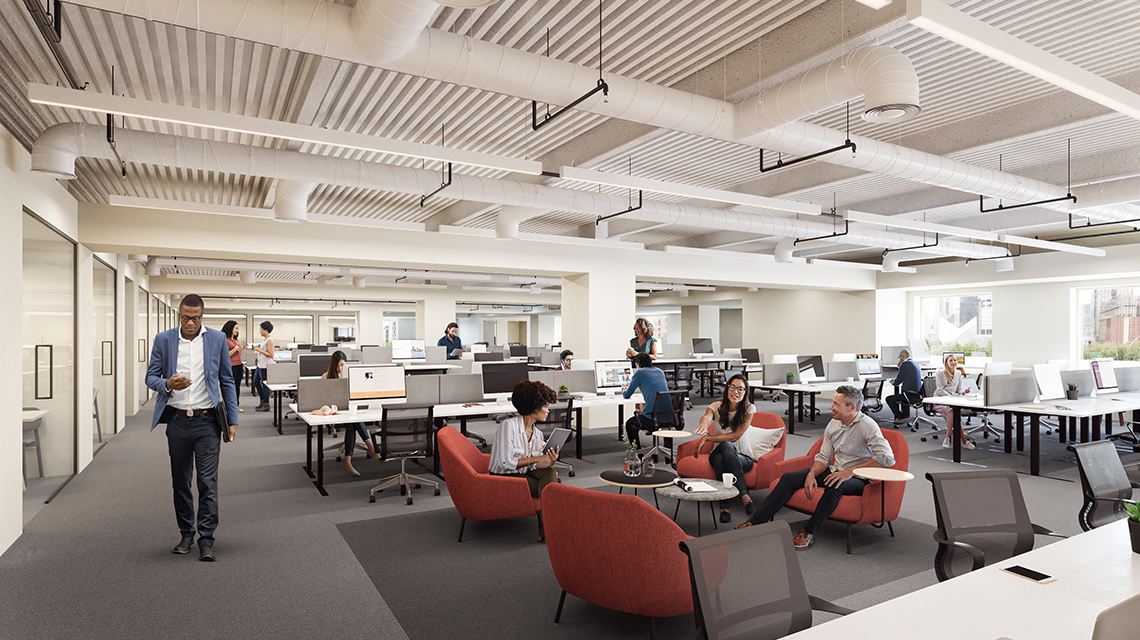The Benefits of Offering Flexible Office Solutions to Tenants
As the business world continues to evolve, the demand for flexible office solutions has risen dramatically. The modern workforce values adaptability, and companies are increasingly recognizing the need to provide workspaces that align with these expectations. Offering flexible office solutions is no longer just a trend; it’s becoming a strategic move that benefits both tenants and landlords.
What is a Flexible Workspace?
A flexible workspace refers to an office setup that offers occupants a professional environment without the long-term commitment of traditional leases. These spaces are typically serviced, requiring minimal maintenance from the tenant. Flexible workspaces can range from day offices and co-working spaces to individual meeting rooms or conference facilities that can be rented on a short-term basis.

This model is particularly appealing to start-ups and small businesses looking for an office without the burden of a permanent lease. However, it also caters to established companies needing additional space for temporary projects, meetings, or conferences.
Key features of flexible workspaces often include:
- Open-plan layouts that encourage interaction and engagement.
- Shared amenities such as kitchens, break rooms, and social areas.
- Dedicated quiet zones and breakout spaces to accommodate various work styles.
The Business Benefits of Flexible Workspaces
- Cost-Effective and Adaptable
Flexible workspaces significantly reduce overhead costs. Traditional offices often come with hefty expenses tied to rent, utilities, and maintenance. In contrast, flexible workspaces allow businesses to pay only for the space they use, often including utilities and even amenities like coffee and snacks in the fee.
Moreover, the adaptable nature of these spaces allows businesses to tailor the environment to their specific needs. Whether it’s rearranging furniture or customizing the layout to better fit a team’s workflow, flexible workspaces provide a sense of ownership without the long-term commitment.
- Boosted Productivity
The design of flexible workspaces is geared towards enhancing productivity. Unlike traditional offices, which can be restrictive and monotonous, flexible spaces offer a variety of environments that cater to different tasks.
For instance, quiet zones are perfect for focused work, while open areas and breakout spaces encourage collaboration and brainstorming sessions. This diversity in workspace options helps reduce the monotony of the traditional office setup, keeping employees motivated and engaged.
- Encouragement of Networking and Collaboration
Flexible workspaces are inherently social environments. By bringing together professionals from different industries and backgrounds, these spaces foster opportunities for networking and collaboration that might not occur in a traditional office.
For growing businesses, this can be invaluable. Casual interactions in shared spaces can lead to new partnerships, ideas, and opportunities, enriching the tenant’s experience and potentially leading to business growth.
- Enhancement of Workplace Culture
The modern workforce prioritizes work-life balance, and flexible workspaces cater to this demand. By offering a workspace that aligns with employees' lifestyles, companies can attract and retain top talent.
Flexible spaces support a hybrid work model, where employees can split their time between the office and home, providing the freedom and flexibility that modern professionals seek. This contributes to a positive workplace culture, where employees feel valued and motivated.

Offering flexible office solutions is not just about meeting the current demands of the workforce; it’s about staying ahead of the curve in a rapidly changing business environment. These spaces provide cost-effective, adaptable, and productive environments that cater to the needs of modern businesses. By fostering collaboration, enhancing workplace culture, and offering the flexibility that today’s employees crave, flexible workspaces are becoming a key element in the future of work.
For landlords and property managers, the move towards flexible office solutions is a strategic one. It not only meets the evolving demands of tenants but also positions their properties as forward-thinking and adaptable in a competitive market. Embracing flexibility is, therefore, a win-win for all parties involved.
If you’re considering offering flexible office solutions to your tenants, now is the time to make that move. The benefits are clear, and the demand is only growing.

